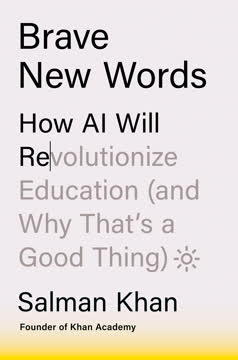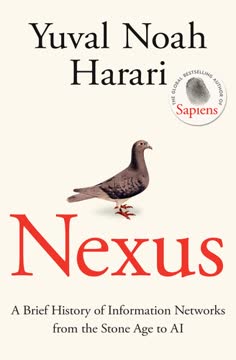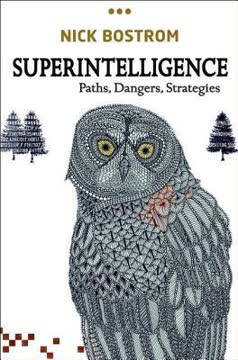Key Takeaways
1. Algorithms are transforming creative fields, challenging human creativity
We have this extraordinary ability to imagine and innovate and to create works of art that elevate, expand and transform what it means to be human.
AI is revolutionizing creativity. Algorithms are now capable of generating art, composing music, and writing stories, challenging the notion that creativity is uniquely human. This transformation is driven by advancements in machine learning and artificial intelligence, which allow computers to analyze vast amounts of data and learn patterns in ways that mimic human creativity.
Creative fields are being disrupted. Traditional creative processes are being augmented or replaced by AI-driven tools:
- Visual arts: Algorithms can generate paintings in the style of famous artists
- Music: AI can compose original pieces in various genres
- Literature: Natural language processing enables AI to write coherent stories
- Game design: AI can create new levels and gameplay elements
These developments raise questions about the nature of creativity and the future role of human artists in a world where machines can produce creative works.
2. Machine learning algorithms can now create art, music, and literature
But is randomness enough to shift responsibility from the programmer to the program?
AI creativity goes beyond randomness. Modern machine learning algorithms use sophisticated techniques to generate creative works that are more than just random combinations:
- Neural networks: Mimic the structure of the human brain to learn patterns
- Generative Adversarial Networks (GANs): Two neural networks compete to create and evaluate art
- Reinforcement learning: Algorithms learn through trial and error to improve their output
Examples of AI-generated creativity:
- DeepArt: Transforms photos into paintings in the style of famous artists
- AIVA: Composes original classical music
- GPT-3: Writes coherent articles and stories on various topics
These algorithms can produce works that are often indistinguishable from human-created art, raising questions about the nature of creativity and authorship.
3. The Lovelace Test: Can machines produce original, creative work?
To pass the Lovelace Test, an algorithm must originate a creative work of art such that the process is repeatable (i.e. it isn't the result of a hardware error) and yet the programmer is unable to explain how the algorithm produced its output.
Testing machine creativity. The Lovelace Test, proposed as a more rigorous alternative to the Turing Test, challenges AI to demonstrate true creativity:
- Originality: The work must be novel, not just a recombination of existing elements
- Repeatability: The creative process should be consistent, not a one-time fluke
- Inexplicability: The programmer should be unable to fully explain how the AI produced the work
Implications of passing the test:
- It would suggest that AI has developed a form of imagination or intuition
- It could challenge our understanding of consciousness and creativity
- It might lead to new legal and ethical questions about AI authorship and rights
The test remains a high bar for AI systems, as most current algorithms still rely heavily on human-designed rules and training data.
4. Mathematical algorithms underpin modern life and AI advancements
Algorithms are steering us through the digital age, yet few people realise that they predate the computer by thousands of years and go to the heart of what mathematics is all about.
Algorithms are ancient mathematical tools. Long before computers, mathematicians developed step-by-step procedures to solve problems:
- Euclid's algorithm (300 BCE): Finds the greatest common divisor of two numbers
- Al-Khwarizmi's work (9th century): Introduced algebraic methods and gave us the word "algorithm"
Modern algorithms shape our world:
- Search engines: Google's PageRank algorithm organizes the internet
- Recommendation systems: Netflix and Spotify use algorithms to suggest content
- Financial markets: High-frequency trading relies on complex algorithms
- Social media: Algorithms determine what content we see in our feeds
These mathematical foundations are crucial for understanding and developing AI systems, which essentially use advanced algorithms to process data and make decisions.
5. AI is learning to play games and create art with human-like intuition
AlphaGo had taught the world a new way to play an ancient game.
Game-playing AI demonstrates intuition. DeepMind's AlphaGo shocked the world by defeating top human players at the ancient game of Go:
- Go was considered too intuitive for computers to master
- AlphaGo made moves that seemed creative and non-obvious to human experts
- It learned strategies that humans had never considered in thousands of years of play
AI creativity in art and music:
- The Next Rembrandt: An AI-generated painting in the style of the Dutch master
- AIVA: Composes classical music that can pass for human-created work
- The Painting Fool: An AI artist that can generate original artwork
These achievements show that AI can develop a form of intuition or creativity that goes beyond simply following programmed rules, challenging our understanding of machine capabilities.
6. Language processing and storytelling remain challenging for AI
Just as the artistic output of humans allows us to get some insight into the complex human code that runs our brains, we will see how the art generated by computers provides a surprisingly powerful way to understand how the code is working.
Language is complex and context-dependent. AI systems struggle with:
- Ambiguity: Words and phrases can have multiple meanings
- Context: Understanding requires knowledge beyond the text itself
- Nuance: Sarcasm, humor, and emotional subtext are difficult to detect
Progress in natural language processing:
- Machine translation: Systems like Google Translate are increasingly accurate
- Chatbots: AI can engage in simple conversations and answer questions
- Text generation: Algorithms can produce coherent articles on various topics
However, true understanding and creative storytelling remain elusive. AI-generated stories often lack overall coherence, emotional depth, and the ability to create compelling narratives that resonate with human readers.
7. AI's creative potential raises questions about consciousness and understanding
If we can replicate through code what an artist has done, then that code reveals something about the process of creation.
The Chinese Room argument. Philosopher John Searle's thought experiment challenges the idea that AI can truly understand language:
- A person who doesn't speak Chinese follows instructions to respond to Chinese messages
- The responses appear intelligent to an outside observer
- But the person doesn't actually understand Chinese
Implications for AI creativity:
- Can an AI system create meaningful art without understanding its significance?
- Is human-like consciousness necessary for true creativity?
- How do we define and measure machine understanding?
These questions blur the lines between simulation and genuine creativity, challenging our definitions of intelligence and consciousness.
8. Human creativity still involves intuition, emotion, and embodied experience
If and when we can create a mind in a machine, then its art will be a fascinating way to penetrate what it feels like to be a machine.
Human creativity is multifaceted. It involves:
- Intuition: Subconscious pattern recognition and decision-making
- Emotion: Feelings that inspire and guide creative choices
- Embodied experience: Physical sensations and interactions with the world
Challenges for AI creativity:
- Replicating human intuition and emotional responses
- Developing a sense of aesthetic judgment
- Incorporating lived experiences into creative processes
While AI can mimic some aspects of human creativity, it still lacks the holistic, embodied experience that informs human art, music, and literature.
9. AI as a tool may enhance rather than replace human creativity
The machines might ultimately help us, as humans, to behave less like machines.
AI as a creative partner. Rather than replacing human artists, AI tools can:
- Generate new ideas and inspiration
- Handle repetitive or technical tasks, freeing humans for higher-level creativity
- Explore vast possibilities that humans might not consider
Examples of human-AI collaboration:
- Music: AI suggests chord progressions or melodies for composers
- Visual art: Algorithms generate base images that artists refine
- Writing: AI assists with research and suggests plot points or phrasings
This partnership model suggests that the future of creativity may involve a symbiosis between human intuition and machine capabilities, leading to new forms of expression and innovation.
Last updated:
FAQ
What's Creativity Code about?
- Exploration of AI and Creativity: Creativity Code by Marcus du Sautoy explores the intersection of artificial intelligence and human creativity, questioning whether machines can replicate or surpass human creative processes.
- Historical Context: The book references historical figures like Ada Lovelace and Alan Turing, highlighting their contributions to computing and AI, and the evolution of algorithms from deterministic to adaptive systems.
- Human vs. Machine Creativity: Du Sautoy challenges the notion that creativity is uniquely human, proposing tests like the Lovelace Test to evaluate machine creativity and exploring how AI can learn from and enhance human creativity.
Why should I read Creativity Code?
- Insightful Perspectives: The book offers a unique perspective on creativity, blending mathematics, art, and technology, encouraging readers to rethink traditional boundaries between human and machine capabilities.
- Engaging Examples: Du Sautoy uses engaging examples, such as AlphaGo's victory in Go, to illustrate AI's capabilities, making complex concepts accessible and relatable.
- Cultural Relevance: As AI shapes our world, understanding its implications on creativity and human expression is crucial, and this book provides a timely exploration of these themes.
What are the key takeaways of Creativity Code?
- Creativity Defined: Du Sautoy defines creativity as producing something new, surprising, and valuable, noting that while machines can generate new outputs, achieving genuine surprise and value is challenging.
- Lovelace Test: The Lovelace Test measures machine creativity by requiring an algorithm to create art that the programmer cannot explain, challenging the idea that machines can only replicate human creativity.
- Role of Algorithms: The book discusses the evolution of algorithms from top-down programming to bottom-up learning systems, allowing machines to learn from data and adapt, potentially leading to creative outputs.
How does Creativity Code define creativity?
- Three Key Aspects: Du Sautoy identifies novelty, surprise, and value as components of creativity, arguing that while machines can produce novel outputs, achieving genuine surprise and value is more challenging.
- Human Code: He introduces "human code," reflecting the unique qualities of human creativity shaped by emotional and experiential factors, seen as a product of evolutionary processes.
- Algorithmic Creativity: The book explores whether creativity can be algorithmic, suggesting that understanding the rules behind creative processes may allow machines to mimic or enhance human creativity.
What is the Lovelace Test mentioned in Creativity Code?
- Definition of the Lovelace Test: The Lovelace Test requires an algorithm to create a work of art that the programmer cannot explain, assessing the machine's ability to originate creative work independently.
- Significance: Passing the Lovelace Test would indicate a level of machine creativity that transcends mere replication of human input, challenging the assumption that creativity is inherently human.
- Implications for AI: The test raises questions about the nature of creativity and AI's potential to contribute meaningfully to artistic endeavors, inviting further exploration of human and machine creativity.
How does Creativity Code relate mathematics to creativity?
- Mathematics as Creative: Du Sautoy argues that mathematics is a deeply creative field, involving the discovery of patterns and relationships, sharing personal experiences of mathematical creativity.
- Algorithmic Foundations: The book discusses how algorithms, rooted in mathematical principles, can generate creative outputs, highlighting mathematics' role in shaping technology and artistic expression.
- Mathematical Aesthetics: Du Sautoy suggests that the beauty of mathematical ideas parallels the beauty found in art, positing that both disciplines share a common goal of exploring and expressing complex ideas.
What role do algorithms play in modern creativity according to Creativity Code?
- Evolution of Algorithms: The book traces the evolution of algorithms from simple, deterministic processes to complex, adaptive systems capable of learning from data, impacting creative outputs.
- Machine Learning: Du Sautoy explains how machine learning allows algorithms to improve performance over time, potentially leading to creative innovations, challenging traditional notions of creativity.
- Collaborative Creativity: The author explores the idea that algorithms can enhance human creativity by providing new insights and perspectives, leading to novel artistic expressions.
How does Creativity Code address the fear of AI surpassing human creativity?
- Human Uniqueness: Du Sautoy emphasizes the unique qualities of human creativity, such as emotional depth and personal experience, which machines may struggle to replicate.
- AI as a Tool: The book suggests viewing AI as a tool to augment human creativity rather than replace it, encouraging a collaborative approach to creativity between humans and machines.
- Future of Creativity: Du Sautoy raises questions about the future of creativity in an AI-driven world, exploring how humans can adapt and thrive alongside advancing technology.
What examples of AI creativity are discussed in Creativity Code?
- AlphaGo's Achievements: The book details how AlphaGo defeated human champions in Go, showcasing AI's potential to excel in complex tasks and sparking discussions about machine creativity.
- Art and Music Generation: Du Sautoy explores AI projects that generate art and music, examining their creative processes and outputs, illustrating AI's capabilities and limitations in artistic endeavors.
- The Next Rembrandt Project: The book discusses a project where an algorithm was trained on Rembrandt's works to create a new painting in his style, raising questions about authorship and creativity in the digital age.
What are the best quotes from Creativity Code and what do they mean?
- "Works of art make rules; rules do not make works of art.": This quote by Claude Debussy emphasizes the organic nature of creativity, suggesting that true artistic expression cannot be confined to strict rules or algorithms.
- "The machine was a thing of beauty.": Du Sautoy reflects on the elegance of early computing machines, highlighting the aesthetic appreciation of technology alongside its functional capabilities.
- "Creativity is a slippery word.": This statement underscores the complexity of defining creativity, indicating that it encompasses various forms and interpretations across different contexts.
How does Creativity Code address the future of creativity?
- Collaboration Between Humans and Machines: Du Sautoy envisions a future where humans and machines collaborate creatively, leveraging the strengths of both for new forms of artistic expression and innovation.
- Ethical Considerations: The book raises ethical questions about AI's role in creative fields, including issues of authorship and originality, encouraging readers to consider the implications of machine-generated creativity.
- Evolving Definitions of Creativity: As AI develops, definitions of creativity may evolve, and Du Sautoy suggests understanding and embracing these changes will be crucial for future creators.
What challenges does Creativity Code identify regarding AI and creativity?
- Trust in Machine Outputs: Du Sautoy discusses skepticism surrounding AI-generated outputs, particularly in fields like mathematics, and the challenge of determining their reliability and validity.
- Emotional Depth: The book emphasizes that while AI can mimic creative processes, it lacks the emotional depth and subjective experience that characterize human creativity, raising questions about authenticity.
- Navigating Complexity: Du Sautoy highlights the increasing complexity of creative fields, suggesting that sophisticated algorithms may struggle to navigate the nuances of human creativity, shaping AI's future in creative domains.
Review Summary
The Creativity Code explores AI's potential for creativity in fields like art, music, and mathematics. Many readers found it fascinating and thought-provoking, praising du Sautoy's ability to explain complex concepts. Some appreciated the philosophical questions raised about consciousness and creativity. Critics felt it lacked technical depth or focused too much on mathematics. Overall, reviewers found it an engaging read that offers insights into AI's current capabilities and potential future developments in creative fields.
Similar Books










Download PDF
Download EPUB
.epub digital book format is ideal for reading ebooks on phones, tablets, and e-readers.






